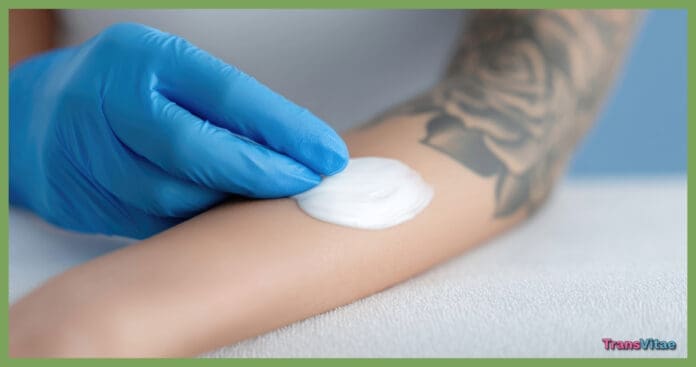When a medical case makes it to social media, especially one involving a transgender parent, it rarely remains in its original context for long. That’s exactly what’s happening with an abstract presented at the 2023 European Society for Paediatric Endocrinology (ESPE) conference. The case, which involves unintentional estrogen transfer between a parent and their child, has sparked alarm online, much of it deeply misleading and harmful.
Rather than prompting discussion about medication safety or provider responsibility, the story has been twisted to vilify transgender women, falsely imply abuse, and resurrect pseudoscientific ideas like “autogynephilia.” Worse, many of the people spreading the story on Twitter are not linking to the actual abstract at all. Instead, they are sharing screenshots stripped of context, exaggerating or fabricating details, and fueling a moral panic.
Let’s take a moment to walk through what the case actually says, what it doesn’t, and why responsible care, not stigma, should be the takeaway.
What the Case Report Actually Describes
According to the ESPE abstract, a 3-year-old girl was referred to pediatric care after six months of breast development and vaginal discharge, clinical signs of early puberty. After testing and imaging, doctors diagnosed peripheral precocious puberty, caused not by a pituitary condition but by exogenous estrogen exposure.
The source was the parent’s gender-affirming hormone therapy: a daily estradiol gel applied to the skin. This gel had been applied to areas like the chest, abdomen, and thighs; places with frequent skin-to-skin contact during daily care routines. Once the delivery method was changed to a transdermal patch, the child’s symptoms began to reverse and her development returned to age-appropriate levels.
This was a case of inadvertent hormone transfer. It was not abuse, not neglect, and not evidence of predation.
What the Case Does Not Say
Despite what many are implying, the abstract does not accuse the parent of wrongdoing, nor does it suggest any intent to harm. There is no mention of sexual misconduct, no criminal allegations, and no pathologizing diagnosis of “autogynephilia.”
And yet, online discourse has quickly jumped to conclusions. Commentators are drawing from discredited theories and making sweeping generalizations about transgender people, particularly trans women, as unfit or unsafe parents. These narratives are rooted not in medicine, but in bigotry.
Many of the viral tweets omit the abstract entirely, relying instead on screenshots with suggestive captions. Some posts have replaced medical language with inflammatory or false claims. This is not informed discussion; it is fear-mongering dressed up as concern.
Medication Safety Is a Real Concern for Everyone
The core medical issue in this case, hormone transfer via skin contact, is real. And it is not unique to transgender people.
Testosterone and estrogen gels used by cisgender patients have caused similar effects. Pharmaceutical labels already include clear warnings. The difference is that when cis people experience these issues, it becomes a conversation about dosage or delivery method. When a transgender parent is involved, it becomes a media storm.
For transgender people using topical hormones, especially those who care for young children, medical providers should:
- Emphasize the importance of handwashing after application
- Encourage covering the application site with clothing
- Advise avoiding skin-to-skin contact with children shortly after use
- Offer alternative delivery methods such as patches, pills, or injections in high-contact households
These are standard precautions, not evidence of poor parenting.
The Role of Gender Clinics and Providers
The abstract concludes with a recommendation that gender clinics discuss these risks clearly with patients and consider non-topical options when children are involved. That is a reasonable and affirming recommendation, not a condemnation.
Clinicians need to do more than just prescribe hormones. They need to support transgender patients in their roles as parents, caregivers, and full people. That includes creating space for honest conversations about parenting and safety without judgment or stigma.
The Bottom Line
This story is being distorted to hurt transgender people, especially mothers. The case is about a medical side effect, not a moral failure. It is about a preventable risk, not a criminal act.
What it actually shows is the need for better medical guidance, safer prescribing practices, and affirming care that meets the real needs of transgender families. It is also a reminder of how quickly fear can be manufactured when transgender people are involved.
To every transgender parent: you deserve support, not suspicion. Your identity is not a danger to your children. Your ability to parent well is not diminished by your transition. Like all parents, you are human. What matters most is not what hormones you take, but how you love, protect, and nurture those in your care.
Let’s focus on facts. Let’s lead with compassion. And let’s stop turning medical safety into another excuse for bigotry.
Want to help stop the spread of misinformation?
- Share the original abstract with accurate context
- Push back against posts using only screenshots or pseudoscience
- Advocate for clear, nonjudgmental healthcare for all families


